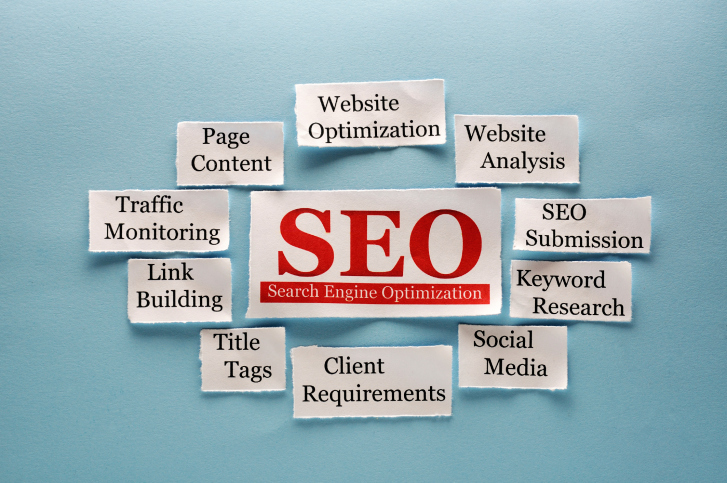Facts about Google that an SEO agency needs to know…
As a digital marketer or SEO agency you will most likely use Google Ads a lot. But taking the time to have a look behind the scenes can reap dividends in terms of how effectively Google Ads works for you and how much you end up paying.
Read on to find out more about the process and how to achieve success.
How the auction process works
First of all let’s understand the auction process. To advertise on Google you need to join a pool of advertisers whose ads will be considered when a user searches for the product or service that these advertisers offer. If there are several relevant advertisers then an auction will take place to determine which advert(s) will be shown.
The way an advertiser joins this auction process is to choose the keyword(s) that they want to bid on. If a user search query closely matches your keyword(s) then your ad will be included in the auction.
So the first essential thing when using Google Ads is to do effective keyword research to ensure that your keywords are the ones most likely to appear in user searches. This needs to be an ongoing process as it can change on a regular basis.
Google Ads also gives you the ability to group keywords according to themes and create different ads relating to specific target searchers.
You can also automate your bid strategy. For example you can set bids for your keywords and fix a maximum daily budget that you are willing to pay for clicks on your ad. You can also specify strategic goals that will enable the system to determine the bids and position of your ads.
How and where Google places the ads
Ad position is the order of your ad in the auction results as compared to other ads. If you have an ad position of 1 it means that yours is the first ad shown on the page. This is a relative position as compared with other ads: it may not necessarily be on the top of the page above the organic search results.
Whether your ad makes it onto the page, and whether it is above or below the organic search results all depends on your Ad Rank. Your Ad Rank is determined by a combination of five factors:
- Your maximum Cost Per Click (CPC) bid ie the amount you’re willing to pay for a click on your ad.
- Your Quality Score ie Google’s assessment of the relevance of your ad and the website it links to. Quality Score is ranked from 1 to 10 and reflects the quality of your keywords in terms of ad relevance, expected click-through rate (CTR) and landing page experience.
- Google’s Ad Rank thresholds ie their minimum criteria to position an ad on a page.
- Contextual search factors: search terms / location / device / time of day and any other user signals and attributes deemed to be relevant.
- Ad extensions. This refers to additional information with which you can supplement your ad, such as contact details or links to specific pages on your site. These can increase the impact of your ad’s performance.
It is important to get your Ad Rank as high as possible. In the short term this can be achieved by increasing your bids, and in the longer term by improving quality scores. A combination of both these strategies is particularly effective.
Taking an example from Google, if you have five advertisers that all want to appear in the top four ad positions on a page, the Ad Rank for each of them will determine their position. If their respective Ad Ranks were 80, 50, 35, 20 and 5 and the minimum Ad Rank threshold required to appear at the top of the page was 40, then only the first two advertisers would appear there. This means that these two advertisers are likely to achieve high click-through rates and volume of traffic.
If the minimum Ad Rank threshold to appear anywhere on page 1 of the search results is 15, then only the top four advertisers will appear there. The advertiser with a threshold of 5 will appear on page 2 and this could result in them receiving a lower volume of traffic and/or paying very little per click.
How Google determines the cost
In the UK it is estimated that the average cost per click (CPC) of Google AdWords is between £0.66 and £1.32. But how does Google determine actual CPC?
In the auction process you set a maximum bid but will often be charged less – and sometimes far less – than this. Basically the actual amount you pay is the minimum amount that is required to maintain your ad position.
Google calculates how much you pay based on your Ad Rank and the Ad Rank of the person below you in the auction. It also works in increments of the smallest billable unit, which in the UK is £0.01. A simplified way of looking at it is the formula:
So using this example, if your Quality Score is 10 and the next bidder’s Ad Rank is 15 you will pay £1.51:
Let’s also return to the earlier example from Google to help understand this better.
The first advertiser with the Ad Rank of 80 pays just enough to beat the second advertiser with the Ad Rank of 50. This is rounded up to the nearest billable unit, which in the UK is £0.01. So if advertiser two is due to pay £2.85 per click, advertiser one will pay £2.86 to maintain their leading position.
Google Ads is a rapidly evolving area and one to which we shall return in this column in due course. As we have seen above, the amount you pay for each click is a combination of many factors. As a digital marketer or SEO agency it is critical to keep your Google Ads campaigns under constant review. You need to monitor the budgetary side and how effectively they are working for you.
You can be sure that if you take your eye off the ball and begin to lose position there will be one or more of your competitors ready and waiting to take your place.

